Payment fraud cost U.S. banks billions of USD, exposing the limitations of traditional rule-based systems. With the surge in digital transactions, banks are turning to machine learning (ML) to detect fraud in real time, reduce false positives, and improve customer experience. In this practical guide, we’ll break down both the challenges and the proven steps banks can take to implement ML for fraud detection effectively.
The digital banking revolution has made life easier for customers, offering instant transactions and seamless experiences. But it’s also opened the door to a flood of payment fraud, hitting U.S. banks where it hurts most—their bottom line.
In 2023, fraud cost U.S. financial institutions over $120 billion, with payment fraud leading the charge (Association of Certified Fraud Examiners, 2024). Old-school fraud detection systems, built on rigid rules, are no match for today’s GenAI-enabled frauds and savvy fraudsters who exploit digital channels like mobile apps and real-time payment platforms.
However, machine learning (ML) is stepping up as a powerful ally and banks are strategically adopting it to detect fraud faster and smarter.
In this blog, we discuss how ML is transforming payment fraud detection for banks and financial institutions across the globe, sharing actionable insights and strategies for effective implementation..
The Growing Fraud Problem in the Banking Sector
Fraud is a relentless challenge for the banks. From credit card scams to account takeovers (ATO) and synthetic identity fraud, the threats keep evolving.
The Federal Trade Commission reported a 30% jump in fraud complaints from 2022 to 2024, driven by the rise of digital payments (FTC, 2024). Platforms like Zelle, processing $806 billion in transactions in 2023, are prime targets (Zelle Network, 2024).
Traditional fraud detection systems often miss the mark, flagging legitimate transactions, and letting sneaky ones slip through. In some cases, false positives can hit up to 90%, frustrating customers, leading to poor customer experience (CX), and clogging operations (Forbes, 2025).
Machine learning changes that by analyzing data in real time, spotting patterns, and adapting to new threats, keeping banks and their customers safer.
How Machine Learning Fights Fraud
Machine learning based models for fraud detection learns from data to outsmart fraudsters. Unlike static rule-based systems, ML continuously learns and evolves, digging into transactions, customer behavior, and even device details to catch suspicious activity. Here’s an overview of how it work.
- Supervised Learning
Models like Random Forest or Neural Networks are trained on examples of “good” and “bad” transactions, spotting known fraud with up to 95% accuracy (Journal of Financial Crime, 2024). - Unsupervised Learning
When fraudsters try new tricks, tools like clustering or autoencoders detect odd patterns without needing labeled data. This is key for catching synthetic identity fraud, costing U.S. banks $6 billion yearly (Aite-Novarica Group, 2024). - Deep Learning
Advanced models like Recurrent Neural Networks (RNNs) analyze transaction sequences, uncovering subtle red flags. A U.S. bank cut false positives by 40% using these tools (Banking Technology, 2025). - Graph Neural Networks (GNNs)
These map connections between accounts and transactions, exposing fraud rings. A 2024 pilot caught 85% of organized fraud missed by older systems (Cyberproof, 2025). - Natural Language Processing (NLP)
By scanning emails or chats, NLP spots phishing attempts. One bank reduced phishing fraud by 25% in 2024 (Tookitaki, 2025).
These approaches help banks stay ahead, protecting their operations and customers with precision. However, deploying and maintaining these models effectively requires robust Machine Learning Operations (MLOps) frameworks.
Challenges in Deploying Machine Learning for Fraud Detection
Implementing machine learning (ML) systems for fraud detection in U.S. banks involves overcoming significant operational and technical hurdles. Here’s what the banking and financial industry is up against.
- Handling billions of daily transactions with inconsistent or incomplete data is a well-documented challenge in ML deployment. For instance, poor data quality reduces model accuracy, as models rely on clean, structured inputs for effective fraud detection. The need for robust data management systems underscores this as a critical hurdle.
- Incorrectly flagging legitimate transactions as fraudulent disrupts customer trust and increases operational costs due to manual reviews. Despite ML reducing false positives by 35% (MasterCard, 2024), the need for ongoing model tuning to balance sensitivity and specificity confirms this as a persistent challenge.
- Fraudsters’ use of advanced techniques, such as generative AI, to evade detection poses a dynamic challenge. ML models must be continuously updated with adversarial training to counter new threats, making this a significant obstacle.
- Strict U.S. regulations like AML and KYC require transparent and ethical ML practices. Ensuring compliance through tools like Explainable AI (XAI) and federated learning is a complex challenge due to the need to balance model performance with regulatory demands.
- Deep learning models, such as recurrent neural Networks (RNNs), require substantial computational resources, which can strain bank infrastructure. The reliance on cloud and edge computing to make these models cost-effective and scalable, highlights this as a technical and financial challenge.
Practical Steps for the Banks to Implement ML for Fraud Detection
To effectively deploy machine learning (ML) for fraud detection, banks and financial institutions must adopt strategic measures to address challenges we discussed above. The following steps, supported by MLOps practices, ensure robust, scalable, and compliant fraud detection systems.
-
Unify Data Sources
Integrate transactional, behavioral, and device data into a cohesive dataset to enhance model accuracy. Unified data systems improved fraud detection rates by 25% in 2024, as reported by Binariks (2024). MLOps-driven data pipelines ensure consistent, high-quality inputs critical for addressing data quality challenges. -
Continuously Update Models
Regularly retrain ML models with fresh data to counter evolving fraud tactics, such as those leveraging generative AI, synthetic IDs, and deepfakes. Automated model retraining, as emphasized maintains robustness against sophisticated threats and helps mitigate the challenge of adaptive fraudsters. -
Combine ML with Rule-Based Systems
Go hybrid and blend ML algorithms with traditional rule-based systems to create a layered defense. This hybrid approach can reduce fraud by up to 30%. -
Prioritize Customer Experience
Prioritize reduction in false positives to minimize customer inconvenience and operational costs. ML-driven systems can potential cut customer complaints by 20% as per the Banking Technology, 2025. Further, continuous model tuning, supported by MLOps, ensures a balance between security and user satisfaction. -
Collaborate with Fintech Experts
Partner with specialized managed services poviders, such as Anaptyss, to deploy tailored modern solutions like the ALFA platform, which is known to reduced false alerts by 75% for a super-regional bank. These partnerships leverage deep domain expertise to address computational and regulatory challenges efficiently.
Conclusion
By 2027, U.S. digital transactions are projected to hit $2 trillion, making real-time analytics a must. Federated learning and blockchain will boost privacy and security, while XAI ensures compliance. Although payment fraud is a $120 billion problem for U.S. banks, machine learning is turning the tide.
Anaptyss helps financial institutions stay ahead with scalable, ML-driven solutions like ALFA, reducing false alerts and ensuring compliance. Our deep domain expertise and MLOps frameworks enable faster, smarter fraud prevention.



